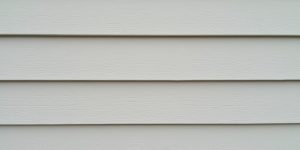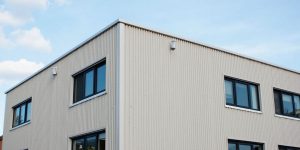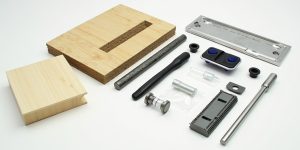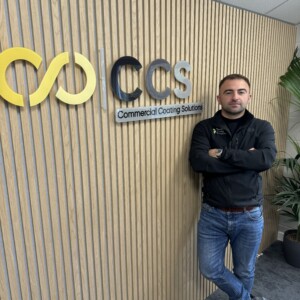Maintaining cladding in commercial buildings is essential for both appearance and structural integrity.
Cladding damage can occur due to various factors such as weather conditions, impact, or general wear and tear over time.
This article will guide readers on effective methods on how to repair damaged cladding, highlighting the importance of professional repair services.
Properly addressing cladding issues not only improves the appearance of a building but also supports its longevity and safety, making professional repair services a much-needed aspect of commercial property maintenance.
1. Hire a Cladding Repair Company

When it comes to repairing cladding, hiring a professional company offers significant advantages.
Professionals have the necessary expertise and experience to handle various types of cladding damage efficiently.
They are equipped with specialised tools and materials, allowing for high-quality repairs that stand the test of time.
Professional cladding repair companies bring a wealth of knowledge to the job, including the latest techniques and industry standards.
They can accurately assess the extent of the damage and recommend the most effective solutions.
Using professionals also means that the repairs will be completed safely, adhering to all necessary regulations.
Additionally, while the initial cost of hiring professionals might seem higher, it often proves to be more cost-effective in the long run.
Professional repairs are durable and reduce the likelihood of recurring issues, saving on future repair costs.
For commercial property managers and maintenance teams, investing in professional cladding repair services is a decision that improves both the safety and aesthetics of their buildings.
2. Temporary Patch Repairs

Temporary patch repairs are quick fixes used to address cladding damage when immediate action is required.
These repairs are often necessary in situations where further damage needs to be prevented until a more permanent solution can be implemented.
Temporary repairs involve using materials such as sealants, tapes, or patches designed to cover and protect the damaged area.
These quick fixes can be particularly useful in emergencies or when adverse weather conditions pose a risk to the building’s structure.
They help reduce immediate problems and provide a short-term solution that can prevent more extensive damage.
However, you need to understand that temporary patch repairs are just that—temporary.
They are not meant to replace a full repair or act as a full cladding restoration and typically do not offer the same level of durability.
While they can be an effective stopgap measure, relying on them for the long term can lead to further issues.
For a lasting and reliable solution, professional cladding repair services should be sought as soon as possible.
3. Replacing Damaged Sections

When cladding is severely damaged, replacing the affected sections is often the best approach.
Cladding replacement begins with identifying the damaged areas that need replacement.
This involves a thorough inspection to determine the extent of the damage and to make sure that all compromised sections are addressed.
Once the damaged sections are identified, the next step is to carefully remove them without affecting the surrounding cladding.
This precision work requires expertise to avoid further damage to the building’s exterior.
After removal, new cladding materials that match the existing ones are installed.
Matching the new materials is necessary to maintain a uniform appearance and compatibility.
Professional involvement in this process is highly recommended.
Experts make sure that the new sections are integrated with the existing cladding, both in terms of aesthetics and structural integrity.
They also guarantee that the installation meets all necessary standards and regulations, providing a durable and consistent finish.
4. Applying a Cladding Overcoat

A cladding overcoat is an additional layer applied to the exterior of a building to protect and improve the existing cladding.
This method is often used when the underlying cladding is still in good condition but requires extra protection or a refreshed appearance.
Materials commonly used for overcoating include specialised paints, coatings, and sealants.
These materials are chosen for their durability and ability to withstand environmental factors such as UV rays, rain, and temperature fluctuations.
The process of applying a cladding overcoat involves cleaning the existing cladding to remove dirt, debris, and any previous coatings.
Once cleaned, the overcoat material is carefully applied to even coverage and adherence.
This not only improves the building’s appearance but also adds an extra layer of protection against future damage.
The benefits of a cladding overcoat include the extended lifespan of the existing cladding, including resistance to weathering, and improved aesthetics.
Commercial property managers can achieve a high-quality finish that meets all necessary standards by choosing professional services for overcoating.
5. Issues with DIY Repair Kits

DIY cladding repair kits are often marketed as a convenient solution for minor cladding damage.
However, several misconceptions exist about their effectiveness, especially for commercial properties.
One common misunderstanding is that these kits can offer a long-term fix comparable to professional repairs.
The reality is that DIY kits often come with limitations.
The materials included may not match the quality or durability of those used by professionals.
Additionally, the instructions provided might not cover all the nuances of proper cladding repair, leading to subpar results.
Using a DIY kit can also pose risks.
Without the proper expertise, there’s a higher chance of improper application, which can lead to further damage or even safety hazards.
Moreover, DIY repairs might not comply with industry standards and regulations, which can be problematic for commercial buildings.
Given these risks, it’s advisable to opt for professional cladding repair services.
Professionals have the experience, tools, and materials needed to perform high-quality repairs that meet all safety and regulatory requirements.
For commercial property managers, this gives them peace of mind and a higher standard of maintenance.
In summary, maintaining the integrity and appearance of cladding on commercial buildings is essential.
Hiring a professional cladding repair company offers numerous benefits, including expertise, high-quality materials, and compliance with industry standards. While temporary patch repairs can provide immediate relief, they are not a substitute for long-term solutions.
Replacing damaged sections and applying a cladding overcoat are effective methods to maintain the durability and aesthetic appeal of the building’s exterior.
DIY repair kits, while appealing, often fall short of providing reliable and lasting results.
For commercial building maintenance, the investment in professional repair services is a wise decision. If your building’s cladding needs attention, consider contacting Complete Spraying Solutions for expert repairs and maintenance.
Contact us today for more information on our professional cladding repair services.

